
View over Tübingen. (876k)
From the Tübingen entry in Wikipedia:
Tübingen is a traditional university town in central Baden-Württemberg, Germany. It is situated 30 km (19 miles) south of the state capital, Stuttgart, on a ridge between the Neckar and Ammer rivers. As of 2014 about one in three people living in Tübingen is a student.
History
The area was probably first settled in the 12th millennium BCE. The Romans left some traces here in 85 CE, when they built a Limes frontier wall at the Neckar. Tübingen itself dates from the 6th or 7th century, when the region was populated by the Alamanni. Some even argue that the Battle of Solicinium was fought at Spitzberg, a mountain in Tübingen, in 367 CE, although there is no evidence for this.
Tübingen first appears in official records in 1191, and the local castle, Hohentübingen, has records going back to 1078 when it was besieged by Henry IV, king of Germany, its name transcribed in Medieval Latin as Tuingia and Twingia.
From 1146, Count Hugo V (1125–52) was promoted to Count Palatine, as Hugo I, establishing Tübingen as the capital of a County Palatine of Tübingen. By 1231, Tübingen was a civitas indicating recognition of civil liberties and a court system.
In 1262, an Augustinian monastery was established by Pope Alexander IV in Tübingen, in 1272, a Franciscan monastery followed. The latter existed until Duke Ulrich of Württemberg disestablished it in 1535 in course of the Protestant Reformation, which the Duchy of Württemberg followed. In 1300, a Latin school (today's Uhland-Gymnasium) was founded.
In 1342, the County Palatine was sold to Ulrich III, Count of Württemberg and incorporated into the County of Württemberg.
Between 1470 and 1483, St. George's Collegiate Church was built. The collegiate church offices provided the opportunity for what soon afterwards became the most significant event in Tübingen's history: the founding of the Eberhard Karls University by Duke Eberhard im Bart of Württemberg in 1477, thus making it one of the oldest universities in Central Europe. It became soon renowned as one of the most influential places of learning in the Holy Roman Empire, especially for theology (a Protestant faculty, Tübinger Stift, was established in 1535 in the former Augustinian monastery). Today, the university is still the biggest source of income for the residents of the city and one of the biggest universities in Germany with more than 22,000 students.
Between 1622 and 1625, the Catholic League occupied Lutheran Württemberg in the course of the Thirty Years' War. In the summer of 1631, the city was raided. In 1635/36 the city was hit by the Plague. In 1638, Swedish troops conquered Tübingen. Towards the end of the war, French troops occupied the city from 1647 until 1649.
In 1789, parts of the old town burned down, but were later rebuilt in the original style. In 1798 the Allgemeine Zeitung, a leading newspaper in early 19th-century Germany, was founded in Tübingen by Johann Friedrich Cotta. From 1807 until 1843, the poet Friedrich Hölderlin lived in Tübingen in a tower overlooking the Neckar.
In the Nazi era, the Tübingen Synagogue was burned in the Kristallnacht on November 9, 1938. The Second World War left the city largely unscathed, mainly because of the peace initiative of a local doctor, Theodor Dobler. It was occupied by the French army and became part of the French occupational zone. From 1946 to 1952, Tübingen was the capital of the newly formed state of Württemberg-Hohenzollern (as French: Tubingue), before the state of Baden-Württemberg was created by merging Baden, Württemberg-Baden and Württemberg-Hohenzollern. The French troops had a garrison stationed in the south of the city until the end of the Cold War in the 1990s.
All pictures are © Dr. Günther Eichhorn, unless otherwise noted.



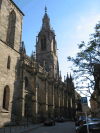
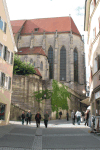


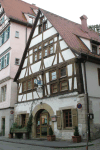
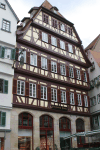

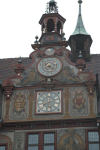




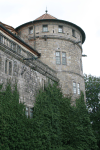

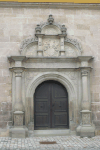




This page contains 22 pictures

Main page for Deutschland (Germany)
Page last updated on Tue Nov 2 15:42:48 2021 (Mountain Standard Time)
Page last updated on Wed Apr 24 18:45:56 2024 (Mountain Standard Time)